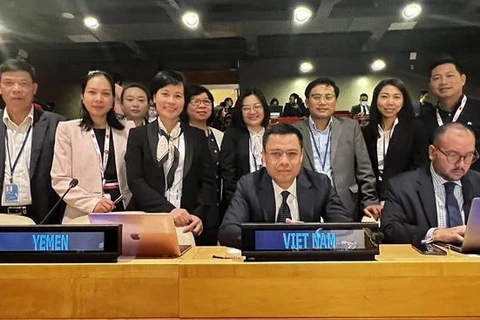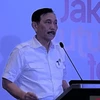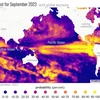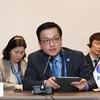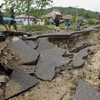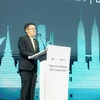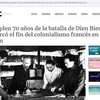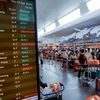New York (VNA) – The UN’s freshly-adopted agreement on the conservation and sustainable use of marine biological diversity of areas beyond national jurisdiction (the Biodiversity Beyond National Jurisdiction Treaty, also known as the Treaty of the High Seas) marks a new development milestone of international law, said Ambassador Dang Hoang Giang, Vietnam’s Permanent Representative to the UN.
It is the third treaty to enforce the 1982 United Nations Convention on the Law of the Sea (UNCLOS), following the UN Fish Stocks Agreement and the Agreement on Part XI of the UNCLOS.
The ambassador said the UNCLOS stipulates the freedom of navigation and fishing on the high seas beyond exclusive economic zones of states, and that seabed resources on the continental shelf of a state are the common heritage of mankind. It also outlines a mechanism for licensing and distributing benefits from seabed mining on the high seas, but has yet to have a similar mechanism for marine genetic resources.
The high seas treaty, comprising 17 chapters with 76 articles and two appendices, develops the UNCLOS on this aspect.
Regarding the main content of the treaty, Ambassador Giang stated that on the basis of the principle that marine genetic resources fall within the scope of the common heritage of mankind, the treaty establishes a framework and method of benefit sharing to help developing countries enjoy equitable sharing of benefits from marine genetic resources, including the digital sequence information (DSI) on genetic resources. “Benefit sharing” not only refers to financial benefits, but also opens up more opportunities for developing countries to participate in marine scientific research, capacity building and technology transfer.
The High Seas Treaty also stipulates the use of Area-Based Management Tools (ABMTs) to balance conservation and sustainable use of protected areas. Besides, regulations on environmental impact assessments are expected to better balance the conservation and sustainable use of marine resources.
Giang said that as Vietnam wants to become a strong, sustainably developing, prosperity and safe maritime nation, which takes part in solving international and regional problems in sea- and ocean-related issues in an active and responsible manner, the country needs to make the most of capacity-building and technology transfer measures, as well as the financial resources of the benefit-sharing fund from marine genetic resources beyond national jurisdiction to access and optimise advanced science and technology.
According to the ambassador, the agreement will be open for signature in New York for two years starting on September 20, the day following a summit on the UN sustainable development goals. It will take effect after 60 countries ratify the agreement./.
It is the third treaty to enforce the 1982 United Nations Convention on the Law of the Sea (UNCLOS), following the UN Fish Stocks Agreement and the Agreement on Part XI of the UNCLOS.
The ambassador said the UNCLOS stipulates the freedom of navigation and fishing on the high seas beyond exclusive economic zones of states, and that seabed resources on the continental shelf of a state are the common heritage of mankind. It also outlines a mechanism for licensing and distributing benefits from seabed mining on the high seas, but has yet to have a similar mechanism for marine genetic resources.
The high seas treaty, comprising 17 chapters with 76 articles and two appendices, develops the UNCLOS on this aspect.
Regarding the main content of the treaty, Ambassador Giang stated that on the basis of the principle that marine genetic resources fall within the scope of the common heritage of mankind, the treaty establishes a framework and method of benefit sharing to help developing countries enjoy equitable sharing of benefits from marine genetic resources, including the digital sequence information (DSI) on genetic resources. “Benefit sharing” not only refers to financial benefits, but also opens up more opportunities for developing countries to participate in marine scientific research, capacity building and technology transfer.
The High Seas Treaty also stipulates the use of Area-Based Management Tools (ABMTs) to balance conservation and sustainable use of protected areas. Besides, regulations on environmental impact assessments are expected to better balance the conservation and sustainable use of marine resources.
Giang said that as Vietnam wants to become a strong, sustainably developing, prosperity and safe maritime nation, which takes part in solving international and regional problems in sea- and ocean-related issues in an active and responsible manner, the country needs to make the most of capacity-building and technology transfer measures, as well as the financial resources of the benefit-sharing fund from marine genetic resources beyond national jurisdiction to access and optimise advanced science and technology.
According to the ambassador, the agreement will be open for signature in New York for two years starting on September 20, the day following a summit on the UN sustainable development goals. It will take effect after 60 countries ratify the agreement./.
VNA

